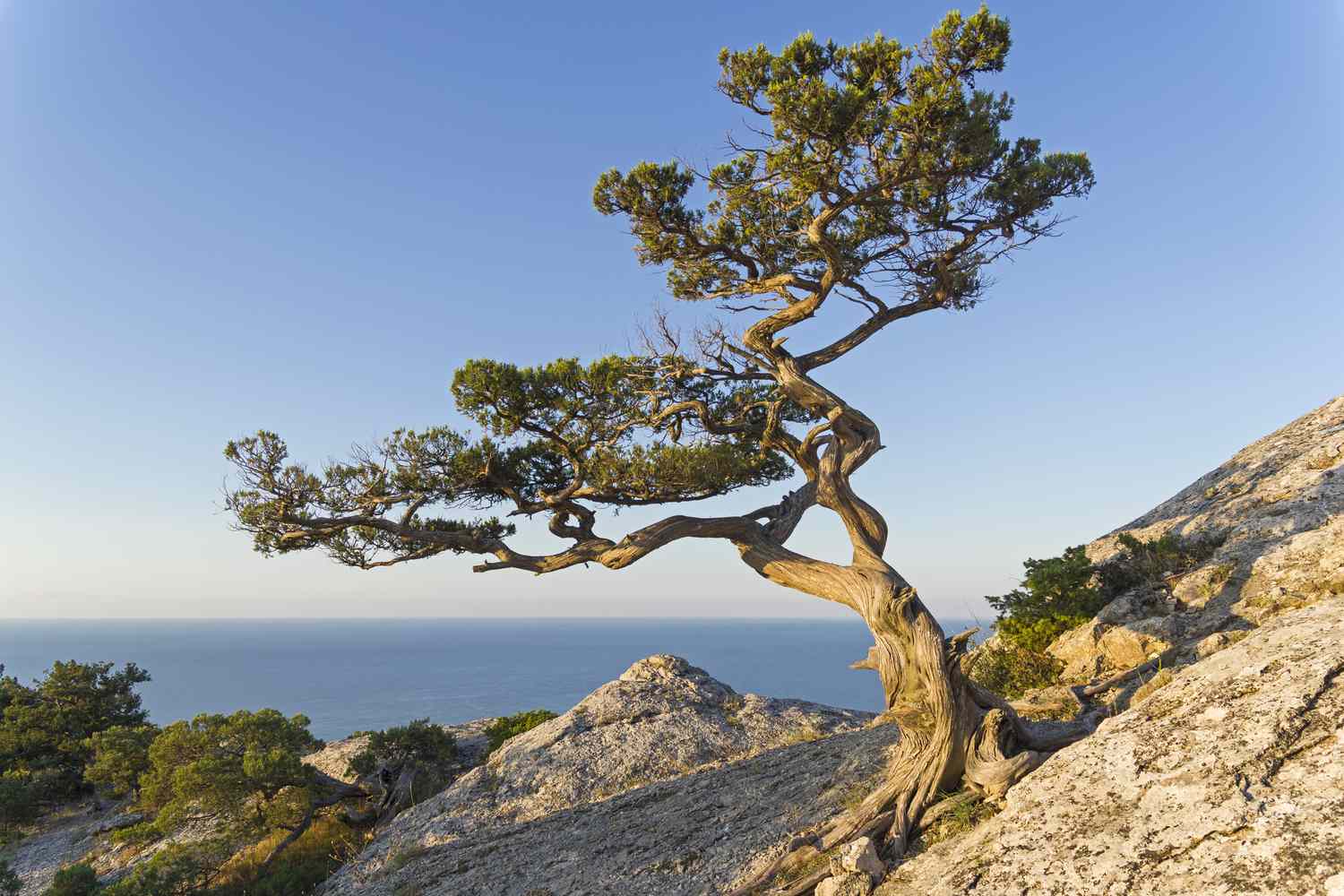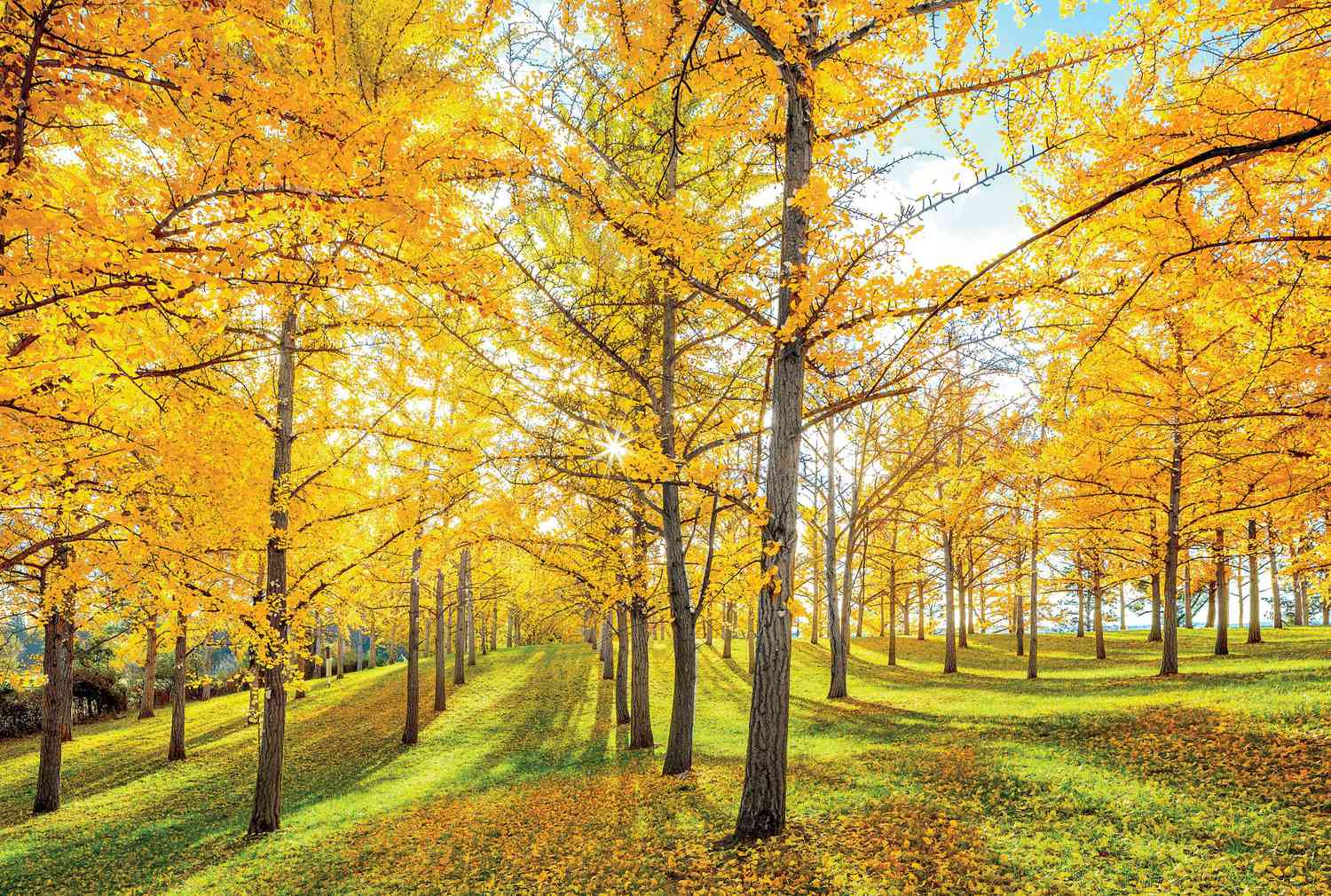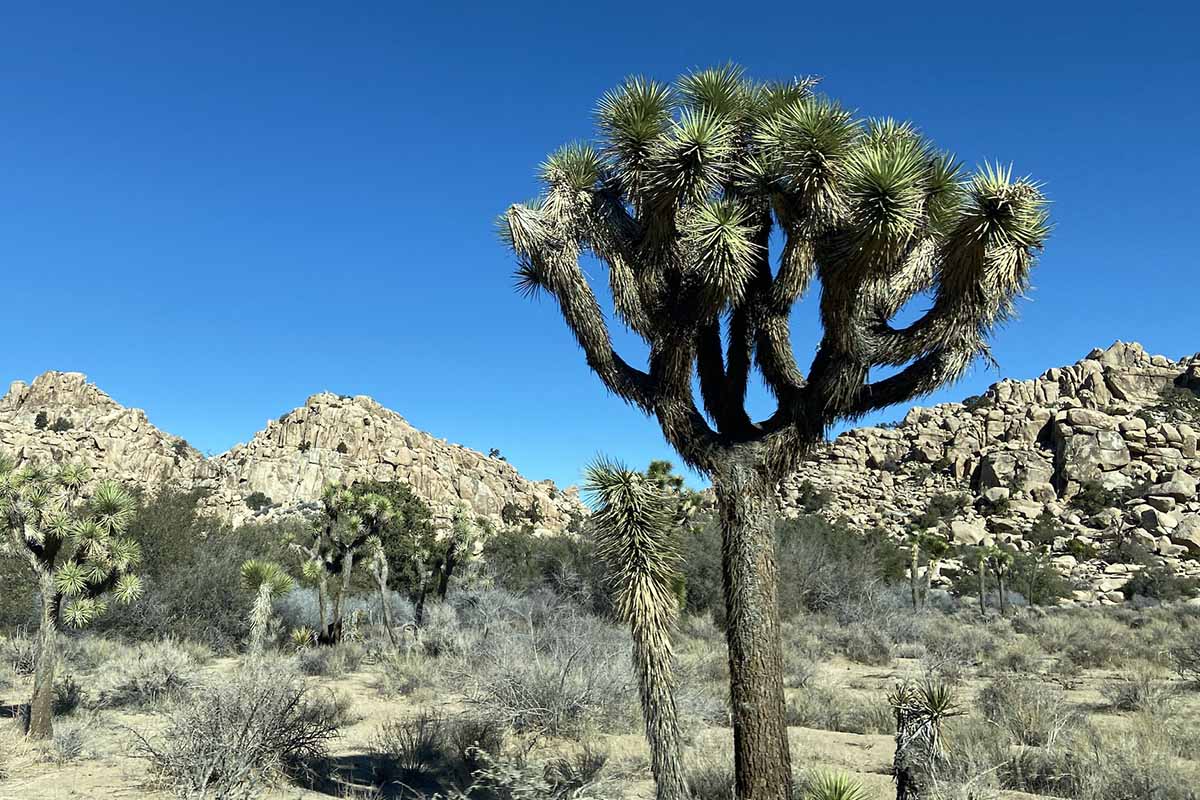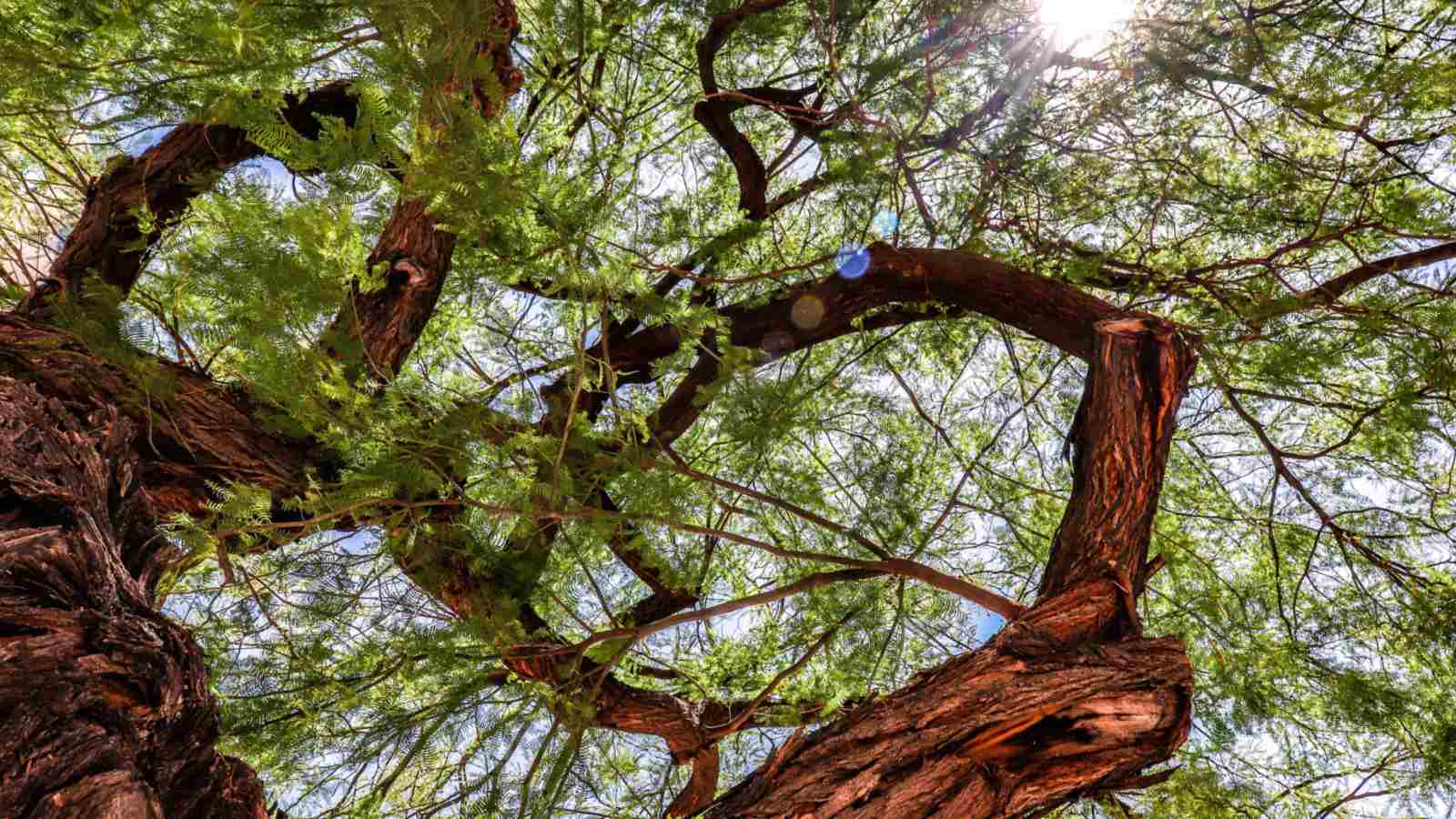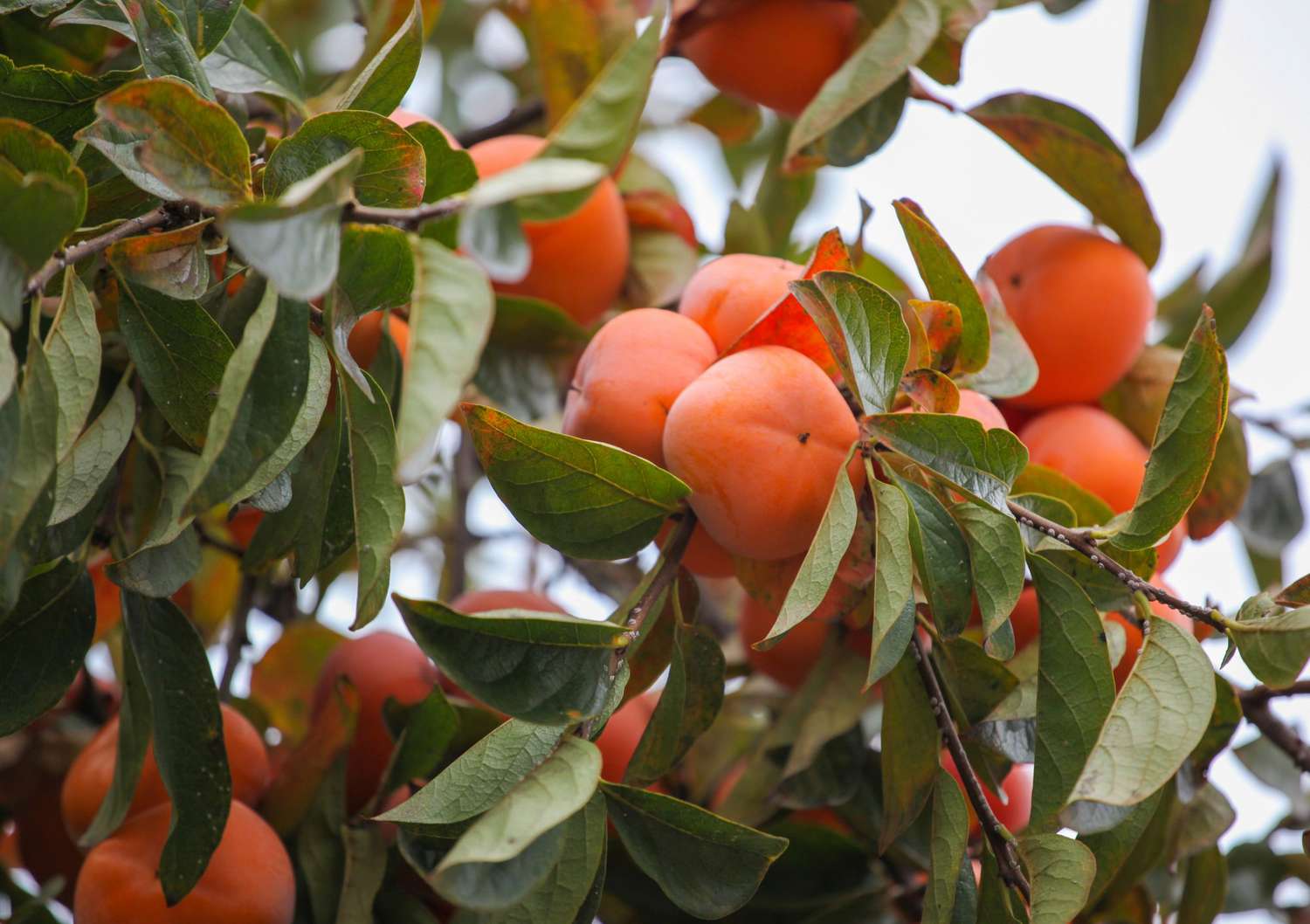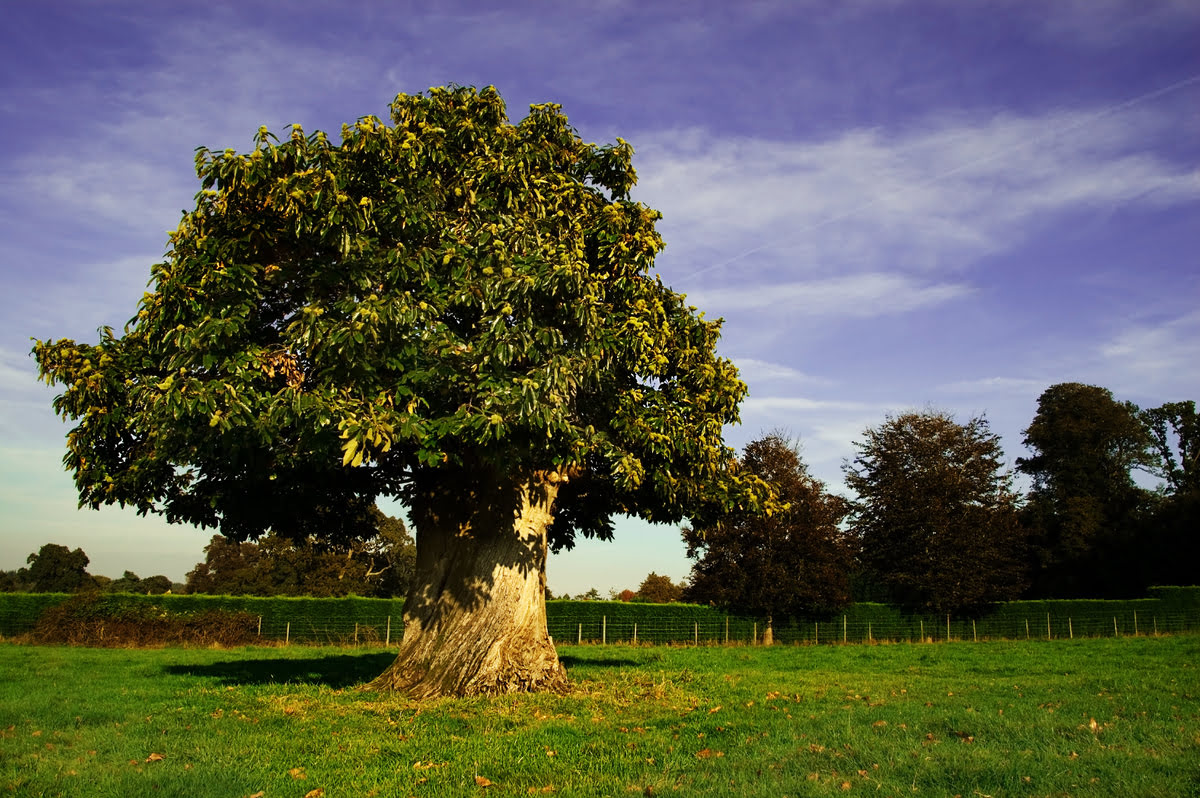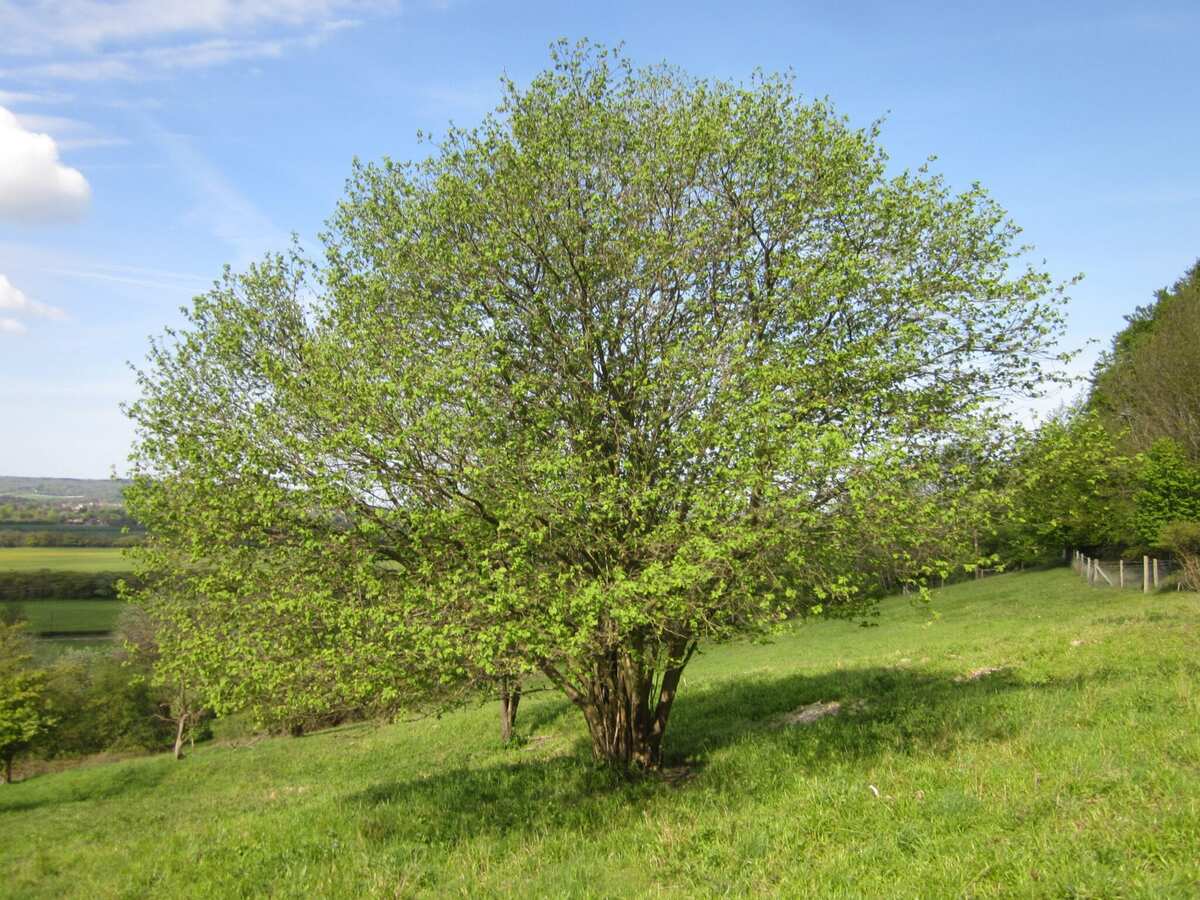Home>Gardening Techniques>Plant Care>Where Do Aspen Trees Grow
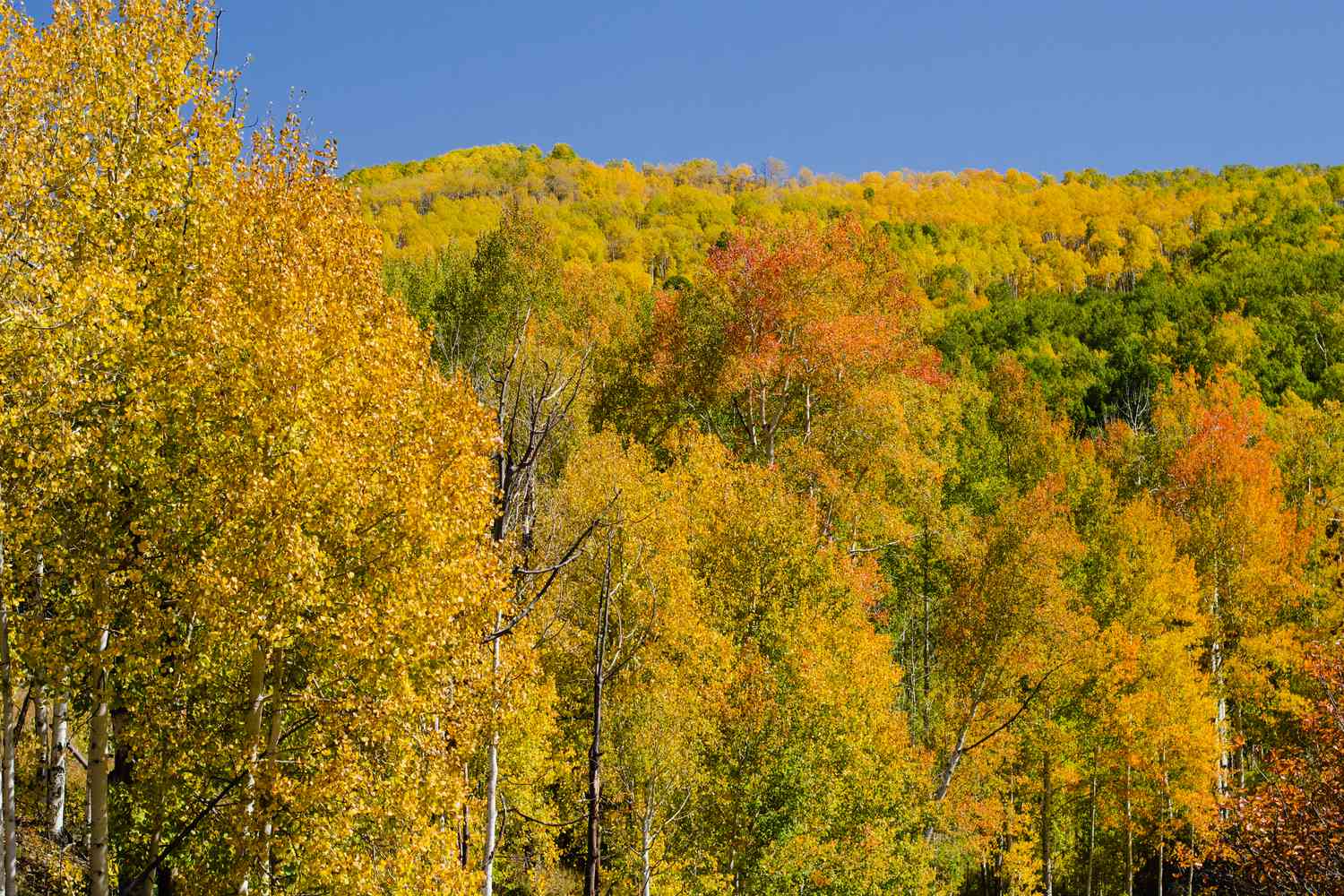

Plant Care
Where Do Aspen Trees Grow
Modified: January 22, 2024
Discover the ideal plant care for growing beautiful aspen trees. Learn about the best locations and conditions for aspen tree growth.
(Many of the links in this article redirect to a specific reviewed product. Your purchase of these products through affiliate links helps to generate commission for Chicagolandgardening.com, at no extra cost. Learn more)
Table of Contents
Introduction
Welcome to the world of aspen trees! These majestic trees have captured the imaginations of nature lovers and horticulturists alike with their stunning beauty and unique characteristics. With their iconic white bark, vibrant foliage, and quivering leaves, aspens are a beloved sight in many landscapes. In this article, we will explore the geographic distribution, climate preferences, soil requirements, altitude range, habitat and ecosystems, as well as the growth and reproduction of aspen trees. We will also touch upon the threats faced by these trees and the importance of conservation efforts.
Aspen trees, scientifically known as Populus tremuloides, are native to North America and can be found across various regions of the continent. They are particularly abundant in the western United States and Canada, thriving in diverse ecosystems ranging from dry plains to mountainous forests. These versatile trees have adapted to different climates and soil conditions, making them an important part of the natural landscape.
One of the most fascinating aspects of aspen trees is their ability to withstand extreme weather conditions. They have a wide tolerance for temperature variations and can grow in both hot and cold climates. However, they do have specific preferences when it comes to rainfall and moisture levels. While aspens can adapt to different moisture conditions, they prefer areas with moderate annual precipitation, typically between 20 to 30 inches.
In terms of soil requirements, aspen trees are not overly picky. They can grow in a variety of soil types, including loam, sandy loam, and clay loam. They can also tolerate slightly acidic to slightly alkaline soil pH levels. However, well-drained soil is essential for their healthy growth. Excessively wet or poorly drained soil can lead to root rot and other diseases.
Altitude plays a crucial role in the distribution and growth of aspen trees. These trees are known for their ability to thrive at higher elevations. Aspens can be found at elevations ranging from sea level to over 10,000 feet. They are commonly found in montane and subalpine zones, where they carpet the mountainsides with their vibrant foliage.
Aspen trees are incredibly versatile and can adapt to a wide range of habitats and ecosystems. They play a vital role in creating and maintaining biodiversity, providing important habitats for various animal species. Their dense foliage provides cover and nesting sites for birds, and their fallen leaves contribute to the nutrient cycling in forests. Many wildlife species, such as deer, elk, and beavers, depend on aspens for food and shelter.
While aspens are native to North America, they have also been cultivated in other parts of the world for their aesthetic value and ecological benefits. Cultivated aspens can be found in parks, gardens, and urban landscapes, adding a touch of natural beauty to the surroundings.
Now that we have laid the foundation, let us delve deeper into the fascinating world of aspen trees, exploring their growth, reproduction, and the conservation efforts needed to protect these magnificent trees.
Geographic Distribution
Aspen trees have a wide geographic distribution throughout North America, with their range spanning from Alaska all the way down to northern Mexico. They can be found in various regions and ecosystems, making them one of the most widely distributed trees on the continent.
In the western part of North America, aspens are abundant in states such as California, Oregon, Washington, Idaho, Montana, Wyoming, Colorado, and Utah. These trees thrive in the diverse landscapes of the Rocky Mountains, the Sierra Nevada Mountains, and the Cascade Range. They are commonly found in montane and subalpine zones, where they dot the mountainsides and create stunning displays of color in the fall.
In the central part of the continent, aspen trees can be found in states like Nebraska, Kansas, South Dakota, North Dakota, Minnesota, Iowa, and Wisconsin. They are also present in parts of Canada, including Alberta, British Columbia, Saskatchewan, and Manitoba. In these regions, aspens can be found in river valleys, wetlands, and meadows, adding beauty to the vast prairies and grasslands.
Moving towards the eastern part of North America, the range of aspen trees extends to states such as Michigan, Wisconsin, Minnesota, New York, Vermont, New Hampshire, and Maine. They can be found in forests and woodlands, often growing alongside other tree species like birch, maple, and pine. In these regions, aspen trees contribute to the overall biodiversity and provide important habitats for wildlife.
It is important to note that the distribution of aspen trees is not limited to the mainland of North America. They are also found in the western and southern parts of Alaska, where they form part of the state’s iconic landscape. Additionally, small populations of aspens can be found in the high mountains of northern Mexico, adding to the global distribution of these remarkable trees.
The geographic distribution of aspen trees is influenced by a variety of factors including climate, soil conditions, water availability, and elevation. These trees have adapted to thrive in different environments, allowing them to play a significant role in shaping the landscapes and ecosystems they inhabit.
Overall, the geographic distribution of aspen trees showcases their resilience and adaptability, spanning across vast regions of North America. Whether found in mountain ranges, forests, or meadows, aspens bring beauty and ecological value to the landscapes they populate.
Climate Preferences
Aspen trees are known for their ability to tolerate a wide range of climates, making them adaptable to various regions throughout North America. While they can withstand extreme temperatures, aspens do have preferences when it comes to specific climate conditions.
Aspen trees are most commonly found in regions with a moderate climate and annual precipitation ranging from 20 to 30 inches. They flourish in areas with well-distributed rainfall throughout the year. This consistent moisture helps them establish and maintain healthy root systems, ensuring their overall growth and survival.
These trees can tolerate both hot and cold temperatures. In hot climates, aspens can be found in higher elevations or near water sources, which help regulate the temperature and provide adequate moisture. In colder regions, they are able to withstand freezing temperatures and even thrive in subarctic and subalpine environments.
Aspens also exhibit a unique characteristic called phenotypic plasticity, which allows them to adapt their growth and leaf characteristics in response to different climates. This means that aspens growing in warmer regions may have smaller leaves and thicker bark to reduce water loss, while those in colder climates may have larger leaves to maximize photosynthesis.
Sunlight is another important factor for aspen tree growth. These trees prefer full sunlight or partial shade, thriving in areas where they receive at least six hours of direct sunlight each day. Less sunlight can result in slower growth and thinner foliage, affecting the overall health of the trees.
Wind can have a significant impact on aspen trees as well. They are known for their distinctive trembling leaves, which flutter and rustle even with the slightest breeze. While aspens can withstand moderate wind, they are susceptible to wind damage in areas prone to strong storms and gusts. Therefore, windbreaks or sheltered areas may aid in their successful growth in windy regions.
It is important to note that while aspens are adaptable to various climates, extreme weather events such as prolonged droughts or severe storms can have negative impacts on their growth and survival. Climate change also poses a threat to aspen trees, as it can alter the conditions they are accustomed to and disrupt their ecological balance.
Understanding the climate preferences of aspen trees is crucial for their successful cultivation and conservation. By providing them with the right conditions, we can help these remarkable trees thrive and continue to grace our landscapes with their beauty.
Soil Requirements
Aspen trees are remarkably adaptable when it comes to soil types, but they do have specific requirements for healthy growth. These trees can be found in various soil conditions, including loam, sandy loam, and clay loam. Understanding their soil preferences is essential for successful cultivation and conservation efforts.
While aspens can tolerate a wide range of soil textures, they thrive in well-drained soil. Excessively wet or poorly drained soil can lead to root rot and other diseases, which can have detrimental effects on the health and longevity of the trees. Therefore, it is crucial to ensure proper drainage when planting aspens.
Aspen trees are adaptable to different levels of soil fertility. They can grow in soils with both low and high nutrient content, although they prefer moderately fertile soil. Adding organic matter, such as compost or well-rotted manure, can improve the fertility and moisture-holding capacity of the soil, creating a favorable environment for aspen tree growth.
Soil pH is another factor that affects the growth of aspen trees. These trees can tolerate a slightly acidic to slightly alkaline soil pH, ranging from 5.5 to 8.0. However, the ideal pH range for aspens is slightly acidic to neutral, around 6.0 to 7.0. Soil pH can be adjusted through the addition of amendments, such as lime or sulfur, to create the optimal pH level for aspen tree health.
Aspens have a unique relationship with mycorrhizal fungi, which form a mutually beneficial association with their roots. These fungi help enhance nutrient uptake by the trees, particularly phosphorus, and improve their overall resilience. Maintaining a healthy mycorrhizal community in the soil is crucial for the successful growth of aspen trees.
When planting aspens, it is important to prepare the soil properly. Clearing any weeds or debris from the planting area and loosening the soil will create a favorable environment for root growth. Adding a layer of mulch around the trees can help retain moisture, suppress weed growth, and regulate soil temperature.
Regular soil testing can be beneficial in determining the nutrient composition and pH level of the soil. This information will help guide the appropriate amendments and fertilizers needed to create the optimal soil conditions for aspen tree growth.
By understanding and providing the right soil requirements, we can contribute to the health and vitality of aspen trees. Creating a supportive soil environment ensures their resilience and ability to withstand various challenges, allowing them to thrive in their natural habitats and cultivated landscapes.
Altitude Range
Aspen trees are known for their remarkable ability to thrive in a wide range of elevations, making them highly adaptable to diverse mountainous regions. These trees can be found at varying altitudes throughout their geographic distribution in North America.
Aspens are commonly found in montane and subalpine zones, covering a broad altitude range. They can be found at elevations ranging from sea level to over 10,000 feet. This wide altitudinal tolerance is a testament to their resilience and adaptability to different environmental conditions.
At lower altitudes, aspens can be found in valleys, meadows, and foothills. These areas provide them with ample sunlight and access to water sources such as streams and rivers. At these elevations, aspens often form vibrant stands, creating beautiful landscapes that are a feast for the eyes during autumn when their leaves turn brilliant shades of gold and orange.
As one ascends into higher altitudes, aspens can still be found, although their growth may be more limited due to the harsher climate. In subalpine environments, where temperatures are cooler and snowfall is more abundant, aspens often create smaller scattered stands or exist as isolated individuals amongst coniferous trees.
The altitudinal range of aspen trees is influenced by various factors, including temperature, precipitation, and soil conditions. Aspens at higher elevations must contend with shorter growing seasons, colder temperatures, and a thinner layer of topsoil. However, these resilient trees have adapted to withstand these challenging conditions and continue to thrive.
Altitude also plays a role in the growth characteristics of aspen trees. At higher elevations, aspen trees tend to be smaller in stature, with shorter trunks and smaller leaves. This is an adaptation to the colder climate, as smaller trees have a lower surface area, reducing water loss through their leaves.
Despite the challenges of higher altitudes, aspen trees play a crucial ecological role in these environments. They provide critical habitat and nesting sites for various bird species, and their fallen leaves contribute to the nutrient cycling in the subalpine ecosystems.
Understanding the altitudinal range of aspen trees is important for conservation efforts and understanding their ecological significance. By appreciating their adaptability to different elevations, we can better appreciate the resilience and beauty of these remarkable trees.
Habitat and Ecosystems
Aspen trees play a vital role in creating and maintaining diverse habitats and ecosystems throughout their range in North America. These trees are not only visually stunning but also provide important ecological benefits for a wide range of organisms.
Aspens are known for their ability to regenerate quickly and form extensive clonal forests. Their ability to reproduce through suckering allows them to colonize disturbed areas and create dense stands. These stands provide valuable habitat for a variety of wildlife species.
The dense foliage of aspen trees provides cover and nesting sites for numerous bird species. Birds like warblers, finches, and thrushes find refuge in the branches of aspens, using them as safe havens from predators and harsh weather conditions. The aspen forests also attract raptors like owls and hawks, which prey on small rodents that inhabit the forest floor.
Aspen trees are also a valuable food source for many wildlife species. In the winter, when other food resources are scarce, the buds and twigs of aspens provide vital sustenance for deer, elk, and moose. These animals rely on the nutritious browse to survive the cold months and sustain their populations.
The importance of aspens extends beyond the mammals and birds that rely on their presence. As a deciduous tree, aspens shed their leaves in the fall, adding organic matter to the forest floor. This leaf litter contributes to soil fertility and provides nourishment for a variety of insects, microbes, and fungi.
One of the fascinating aspects of aspen ecosystems is the symbiotic relationship between the trees and mycorrhizal fungi. These beneficial fungi form a mutually beneficial association with the roots of the aspen trees. The fungi aid in nutrient uptake, particularly phosphorus, and in turn, the trees provide the fungi with carbohydrates. This symbiotic relationship enhances the resilience and overall health of the aspen ecosystem.
In addition to their ecological benefits, aspen forests also provide recreational and aesthetic value. Many people are drawn to the beauty of aspen groves, especially during the fall when their leaves turn vibrant shades of yellow and gold. Hiking, camping, and photography are popular activities in areas with dense aspen stands.
However, despite their significance, aspen ecosystems face threats and challenges. Human activities such as logging, land development, and livestock grazing can negatively impact these forests. Climate change and altered fire regimes also pose significant threats to aspen communities.
Protecting and conserving aspen habitats is vital for preserving biodiversity and maintaining healthy ecosystems. By understanding the critical role of aspen trees and the interconnectedness of the species that depend on them, we can work towards their preservation for future generations to appreciate and enjoy.
Natural Range vs. Cultivation
Aspen trees have a vast natural range across North America, where they have evolved to thrive in diverse ecosystems. However, their beauty and ecological benefits have led to their cultivation in other parts of the world. Let’s explore the differences between the natural range of aspens and their cultivation in various environments.
In their natural range, aspens are found in a wide variety of habitats, ranging from dry plains to mountainous forests. They have adapted to specific climate conditions, soil types, and altitudes, which contribute to their resilience and ability to survive in different regions. Aspens play a crucial role in maintaining biodiversity, providing habitat for a range of wildlife species, and contributing to nutrient cycling in their ecosystems.
In contrast, cultivation involves intentionally growing aspens in areas outside their natural range. Cultivated aspens are often planted in parks, gardens, and urban landscapes for their aesthetic value and ecological benefits. They can bring a touch of nature and beauty to areas where native vegetation may be limited.
When cultivated, aspens are often selected for specific traits, such as disease resistance, faster growth, or vibrant foliage color. These traits are desired for landscaping purposes or to enhance the aesthetic appeal of outdoor spaces. Cultivated aspens may be selected from specific genetic strains or hybrids, making them slightly different from their counterparts in the wild.
One of the challenges of cultivating aspens outside their natural range is recreating the specific environmental conditions they require to thrive. While aspens are adaptable, providing the right soil, moisture, and sunlight conditions is crucial for successful cultivation. Special care must also be taken to prevent invasive diseases or pests from affecting the health of cultivated aspens.
It is important to note that while cultivation can bring the beauty and benefits of aspens to new areas, it is not a substitute for conserving their natural range. The preservation of natural aspen ecosystems is crucial for maintaining the genetic diversity and ecological interactions that have evolved over time. Protecting their natural habitats and implementing conservation efforts is essential for the long-term survival and health of aspen populations.
By understanding the differences between the natural range and cultivation of aspen trees, we can appreciate their ecological significance and the importance of conserving their native habitats. Whether in their natural range or cultivated environments, aspens continue to captivate with their beauty and contribute to the well-being of our ecosystems.
Aspen Tree Growth and Reproduction
Aspen trees are fascinating in their growth and reproductive strategies, contributing to their ability to form expansive forests and thrive in a variety of environments. Let’s delve into the unique aspects of aspen tree growth and reproduction.
Aspens primarily reproduce through a process called suckering. They have extensive root systems that send up new shoots called suckers. These suckers sprout from the underground root network, allowing aspens to form clonal colonies or “stands”. These stands can cover large areas and consist of genetically identical individuals connected by a shared root system.
The ability to form clonal colonies provides aspens with several advantages. It allows them to rapidly colonize disturbed areas, such as after forest fires or clear-cutting. It also enables them to regenerate quickly, ensuring their survival and persistence in dynamic ecosystems.
Aspen trees typically reach maturity at around 20 to 70 years of age, depending on various factors such as local climate and growing conditions. At maturity, aspens can reach heights ranging from 40 to 80 feet, with trunks averaging around 10 to 18 inches in diameter.
Aspens have a relatively short lifespan compared to some other tree species. Individual trees typically live for 50 to 150 years, although some exceptional specimens may survive for over 200 years. However, the clonal colonies formed by aspens can live for much longer periods, with some estimated to be thousands of years old.
In terms of growth rate, aspen trees are known for their rapid development. In their favorable environments, aspens can grow as much as 2 to 3 feet per year. This rapid growth, combined with their suckering ability, contributes to the formation of dense and expansive aspen forests.
Aspen trees have a unique and recognizable appearance. They boast beautiful white bark, which contrasts strikingly against their vibrant green leaves. The leaves of aspens are somewhat round with serrated edges and a bright green color. In the fall, they transform into a riot of golden yellow hues, creating a breathtaking display of autumn colors.
Environmental factors such as sunlight, water availability, and nutrient levels greatly influence aspen tree growth. They prefer full sunlight or partial shade and require well-drained soil to thrive. Adequate moisture, particularly during the establishment phase, is essential for their successful growth. Aspens can tolerate various soil types and are adaptable to a wide range of climatic conditions, making them versatile in different environments.
Understanding the growth and reproductive strategies of aspen trees helps us appreciate their unique characteristics and ecological importance. Their clonal reproductive strategy, coupled with their rapid growth and vibrant aesthetics, contributes to their significant role in shaping forest ecosystems and captivating the human eye.
Threats and Conservation
Aspen trees, like many other species, face threats and challenges that can impact their populations and ecosystems. Understanding these threats is crucial for implementing effective conservation strategies to protect these ecologically important trees.
One of the significant threats to aspen trees is habitat loss and fragmentation. Human activities such as logging, land development, and infrastructure expansion result in the loss and degradation of aspen habitats. Clear-cutting can particularly impact aspens, as their ability to rapidly regenerate through suckering relies on intact root systems and connected colonies.
Invasive species pose another threat to aspen trees. Non-native plants, insects, and diseases can outcompete native flora and disrupt the balance of ecosystems. For example, the spread of non-native grasses can lead to increased fire frequencies, which can negatively impact aspens. Diseases such as the Aspen Decline and Sudden Aspen Decline have also affected aspen populations in certain regions.
Climate change is a pressing concern for aspens, as it can alter their preferred climate conditions and negatively impact their growth and survival. Changing patterns of temperature, precipitation, and drought can stress aspens, making them more vulnerable to pests, diseases, and reduced growth rates. Shifts in climatic conditions can also affect the timing of key processes such as leafing out and fall color changes.
Fire is both a threat and a necessary process for aspen ecosystems. While moderate-intensity fires can stimulate aspen regeneration, more frequent and intense fires can negatively impact aspen stands. Fire suppression efforts and altered fire regimes can disrupt the natural cycle of fire and regeneration in aspen forests.
To address these threats and protect aspen trees, various conservation efforts are underway. Conservation organizations and government agencies work together to identify and protect critical aspen habitats, implementing measures to mitigate habitat loss and fragmentation. These efforts often involve collaborating with landowners, implementing sustainable forestry practices, and creating protected areas.
Conservation strategies also focus on invasive species management, including the monitoring and control of non-native plants, insects, and diseases. This involves early detection, prevention, and management practices to minimize their impact on aspen ecosystems.
Climate change mitigation and adaptation are essential components of aspen tree conservation. Efforts to reduce greenhouse gas emissions and promote sustainable land management practices can help mitigate the impacts of climate change on aspens. Additionally, implementing strategies to conserve water resources and promote resilience in ecosystems can aid aspens’ ability to cope with changing climatic conditions.
Public awareness and education play a crucial role in aspen conservation. By increasing understanding of the ecological importance and intrinsic value of these unique trees, individuals can contribute to efforts to protect and restore aspen habitats. Engaging in sustainable land practices, supporting local conservation initiatives, and advocating for policies that prioritize the preservation of aspens can make a difference.
Preserving and conserving aspen trees is not only important for their ecological significance but also for the aesthetic and recreational enjoyment they provide. By addressing the threats they face and implementing effective conservation measures, we can ensure the continued existence and vitality of these remarkable trees for future generations to appreciate.
Conclusion
Aspen trees, with their striking beauty and ecological importance, have captured our fascination and admiration. Their wide geographic distribution, adaptable nature, and vibrant displays of fall color make them a beloved sight in many landscapes. From their natural range in North America to their cultivation in other parts of the world, aspens have a profound impact on the ecosystems they inhabit.
Aspens are resilient trees, capable of thriving in various climates, soil conditions, and altitudes. Their ability to reproduce through suckering and form clonal colonies allows them to rapidly colonize disturbed areas and regenerate quickly. This unique reproductive strategy contributes to the formation of expansive aspen stands that provide vital habitat and food sources for numerous wildlife species.
However, aspens face threats and challenges that require our attention and conservation efforts. Habitat loss, invasive species, climate change, and altered fire regimes pose significant dangers to aspen populations and ecosystems. Protecting their habitats, managing invasive species, mitigating climate change impacts, and promoting sustainable land management practices are crucial for the preservation of these remarkable trees.
Conservation initiatives, with the support of organizations, government agencies, and individuals, are essential for safeguarding aspen trees and their ecosystems. By raising awareness, implementing effective strategies, and advocating for the preservation of their natural range, we can ensure the continued existence and vitality of aspen forests for generations to come.
Whether exploring their natural range in North America or admiring their cultivated beauty in parks and gardens, aspen trees continue to enchant and inspire. Their growth, reproduction, diverse habitats, and ecological significance remind us of the interconnectedness and resilience of nature. Let us cherish and protect these magnificent trees, appreciating the gifts they bestow upon our landscapes and the countless lives they support.

